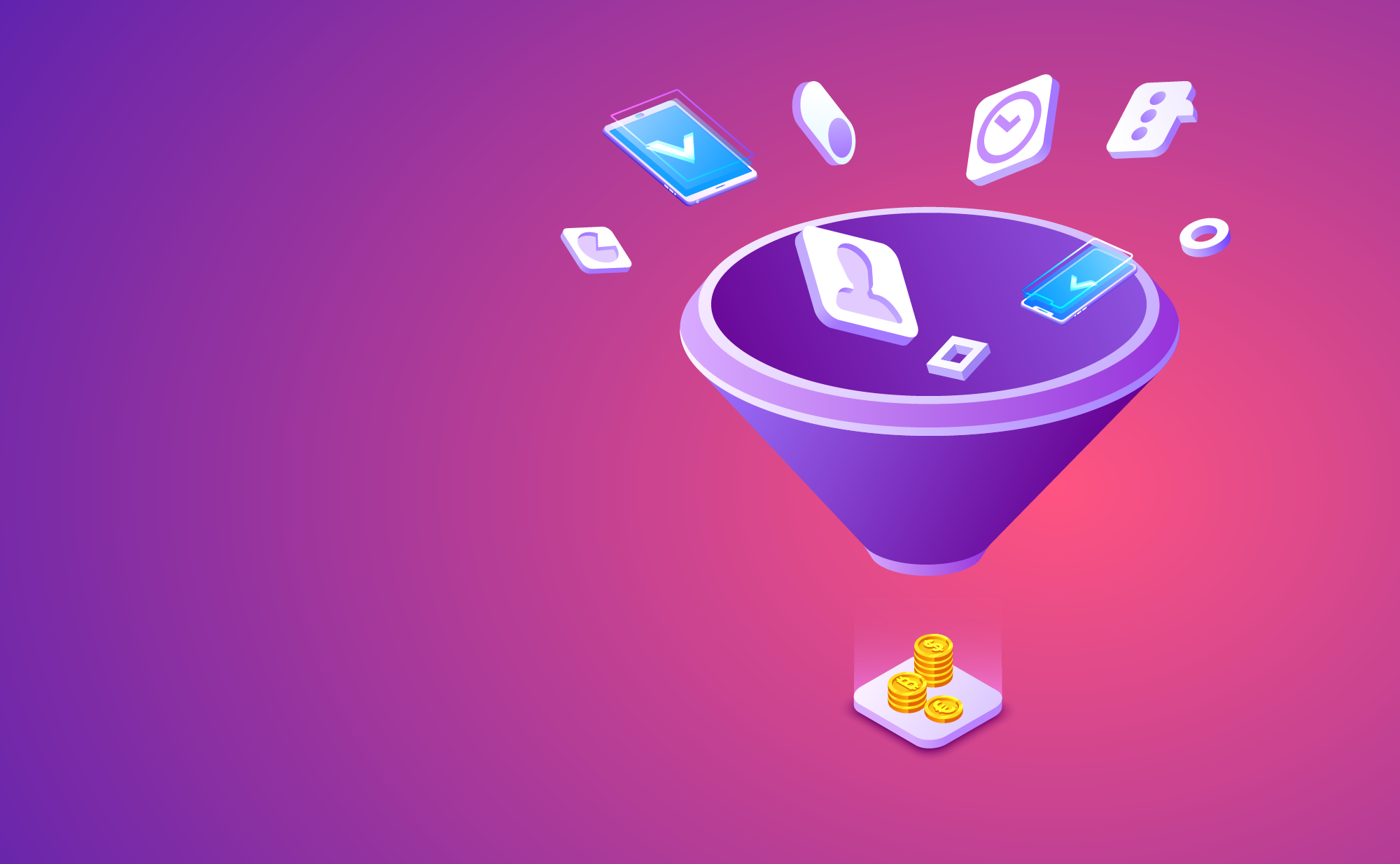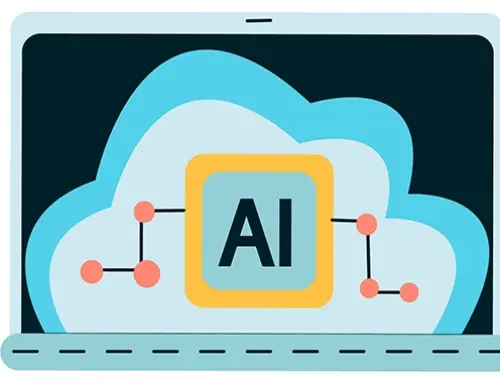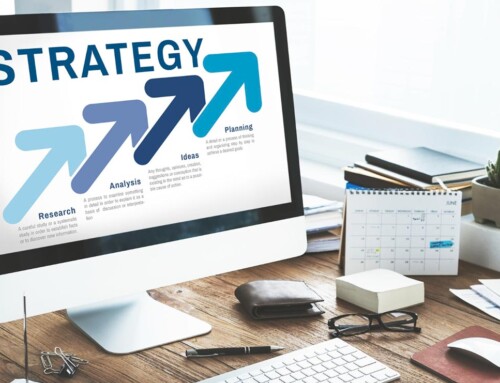Contents
The final goal of any business is to get more customers to buy their products or services. We have all made some great sales and lost some good opportunities. Sometimes, the difference seems almost random, you either make it or you don’t. But in fact, there’s a lot you can do to make sure you get more sales than fails. Of course, businesses have always been trying to increase their sales. So, trying to turn a person showing interest into a paying customer in itself is nothing new. However, with a sales funnel, these efforts can be directed better, providing you with better results and better “conversion rates.” Sales funnels have proven to be indispensable to any business, no matter how small. That’s why funnel management has become a significant concern for almost all businesses.
A sales funnel usually means a series of steps a potential buyer will take, from the very first to the moment of final purchase. One of the best ways to think about it is in terms of a journey. That journey starts with a lead, a potential customer who has discovered your business. Then, you need to ensure the lead takes the right path to finalize their purchase, and that’s when your sales funnel comes in. A good sales funnel will also keep you and your employees updated about all leads and remind you to follow up on them.
But what exactly do we mean by a sales funnel? What are the stages of customers’ journey through the funnel? And how to create a sales funnel for your business? I’ll discuss these and other vital questions in the following sections, so make sure to stick around. I’ll also show you how to implement your own sales funnel to improve your conversion rate and make your business more successful. If you’re in a hurry and don’t have the time to read this article through, you can use the table of contents to quickly find the content you need.
Sales Funnel Definition: What Exactly is a Marketing or Sales Funnel?
Before discussing the different sales funnel stages or how you can make it work for you, we need to go over what a sales funnel is and isn’t. That may seem too basic, but even a bit of extra context and a straightforward definition can make everything easier down the line.
A sales funnel can be defined as a process that helps direct potential customers to make a purchase. The “top” of the funnel begins when the potential customer or “lead” learns about your brand or company. The next stages of the sales funnel will be all about information and context. The lead will be learning about your business and comparing it to others. In the meantime, you or your employees will try to determine if they’re the right fit for your products or services. Finally, if you’ve designed a good sales funnel with all the stages covered, you’ll have converted a lead into a customer.
What are the 4 stages of a classic sales funnel?
Your sales funnel will no doubt be as unique as your business. There will be funnel stages specific to your business niche. Later on, I’ll provide a sales funnel template you can personalize and use for your own small business or company. But no matter its type, your classic sales funnel will likely include these critical stages: Awareness, Interest, Decision, Action (AIDA).
Stage 1: Becoming Aware
Everything starts with the buyer discovering your business. They may have stumbled on it by accident, found it by Googling something, or they may have followed ads you’ve placed here and there. It’s not that the way they discover you doesn’t matter — in fact, that’s one of the most vital pieces of information you can have. Despite that, they still fall in the same category because now they are leads. Leads are people aware of your brand — they may not move much beyond this point, but they can also end up as your lifetime customers. In short, the entire buyer’s journey starts with awareness.
Your business funnel will tell you what type of content you should present to your lead and how to present it. Your sales team should also start to slowly qualify the leads into prospects (more about that in the following parts).
Stage 2: Showing Interest
After the awareness stage, some of your leads will be pretty interested in what you have to offer. They’ve begun gathering information, comparing your solutions to that of the competition, and trying to see if solving that particular pain point is worth spending budget on something new. It is your job to show them that your solution is perfect for them, better than the ones your rivals are offering and that it will help them save more down the road. Traditionally, this would be all about persuasion and sales tactics. Now, with buyers acting in a completely new way, you need to help them reach these decisions by providing as much valuable information as you can. That’s why a lot of businesses target the prospects at this stage of the sales funnel with case studies, social proof, and whitepapers.
Stage 3: Making the Decision
When your prospect gets to the decision-making stage, they’re ready for more sales-oriented pitches, offers, and content. The previous step was mainly about providing information and details. This one is about showing the buyer how your product will add value to their life or business. Convincing them of this is not about pressure and hard sell, however. They need to see that value for themselves.
If you’re offering a service or software, you may want to think about doing a demo. You can schedule a meeting with the prospect and walk them through your product or service. Of course, you don’t have to hold these meetings face-to-face. Because of the pandemic, video-conferencing has never been easier, and you should use that to your advantage.
Another excellent idea at this stage is to offer a free trial. A free trial license lets the customer experience your solution, coming to see how valuable it can be. Make sure to limit the length of the trial to a reasonable amount. For example, Offering a 90-day free trial for a simple calendar app may not be a good idea. Many companies usually go for 14 or 30 days of trial. Free trials have an additional advantage. By the time the free trial is about to end, the user will have come to see how good your solution is, and they may even depend on it to get things done. Make sure to ask for credit card information when you’re signing users up for the trial. Once the trial period is up, the buyer will be automatically charged using their credit card information.
But what if your business provides physical products instead of services or applications? Naturally, demos and free trials don’t make sense in this case. So, how can you help the customer make their decision? As always, there are more than a few ways to go about it, but many businesses offer special deals at this point. For example, you can have a one-time deal for 10% off for first-time buyers. How much of a discount you’re willing to give new customers at this point is for you to decide. You just need to make sure the prospects know about the deal you’re offering. That means you should design and send special emails to buyers at the decision-making stage and let them know what they’ll be getting.
Stage 4: Acting on the Purchase
Finalizing the purchase is usually the last step of the sales funnel. At this stage, the customer sees your solution as helpful and valuable and wants you to deliver it. Despite this stage being the end of the line, you still have some tasks to perform. Also, the customer can back out at the last minute. To close the deal, you and your sales team must review all the information you have gathered on the prospect. That can help you discover any additional doubts or hidden problems the customer may have. You should also think about your payment methods. Do you provide an easy way for your buyers to pay? Do you only accept credit cards, or can they also purchase your products using PayPal or other web services? Some businesses even offer different payment plans to pay the entire sum at once or in installments. Adding some incentives, like a better price for annual payments, can help direct your customers to the method that fits you best.
So, at this point, the customer will have paid and bought your products or services. That does not mean you should stop handling them as prospects. Retaining customers and keeping them coming back is one of the best ways to ensure a steady revenue. Customer retainment is even more essential to small businesses, which may not get tons of incoming new leads all the time. To keep your customers happy and willing to return for another purchase, you should place them on a new email nurture plan. As in the previous stages, automating your sales funnel will help you get better results. RunSensible, for example, improves bottom-of-the-funnel management by letting you create customized newsletters and email nurture lists.
Why are Sales Funnels Important for your Business?
The right marketing funnel will go a long way toward increasing your sales while optimizing or even reducing your budget. Depending on its type, sales funnels can have different advantages for a business. The widely-used lead generation marketing funnel, for example, can help increase the number of people you can reach with your content. Naturally, all funnels have some essential benefits in common. These are what make funnel management indispensable to any business, no matter its size or niche. The most obvious way a sales funnel can improve your business is by optimizing your marketing for the best results.
A good business funnel can help you and your sales team present the right content or marketing material at the right time to the right person. For example, automating your marketing funnel by using RunSensible will make email nurture much more efficient, getting you more conversions. The right funnel automation software will track the buyer’s journey, recording where in the funnel each leads is. It also allows you to design unique content and email nurture for leads at each stage. But that’s not the only reason sales funnels are crucial for your business.
Remember the sales funnel definition I mentioned before?
So far, I’ve only discussed sales funnels as a way to make the buyer’s journey easier and faster. But a good sales funnel will also help you spend your time and budget more efficiently.
Whether you have taken the time to create an accurate buyer persona or not, you roughly know what type of customers will want to buy your products or services. Suppose you’re offering a feature-rich, scalable accounting application. It stands to reason that your customers are large companies and corporations. Even if a mid-sized company’s CEO lands on your website and signs up for your newsletter, you won’t be able to close a sale because you don’t have the right product for them.
So, not all leads will turn out to qualify as your target customers. If you and your salespeople spend time and budget on every lead you get, you’ll probably be wasting more money than you’d be making. That’s why it’s essential to create a sales funnel that can help you qualify your leads. Your sales funnel lets you choose your battles by narrowing your list, focusing your energy on the leads most likely to become customers. This goes double when you’re a small business offering your products and services to consumers or other small businesses.
Top 3 Types of Marketing Sales Funnel for Small Businesses
Lead Generation Funnel
I’m sure you’ve come across websites that let you download a free ebook or whitepaper if you sign up with them. Using this type of “gated content” to get the basic contact info from a potential customer is a typical “lead generation” method. As one of the very first steps of many sales funnels, “lead generation” is defined as a way to turn visitors into leads you can follow up on. Here, “lead” means a person who has discovered your product and is curious about the solution you’re offering. Lead generation is vital since it provides you with the contact details and other info you need to convert visitors. The information you collect on leads lets you start a focused sales funnel that can get your customer to say “yes” much faster.
As I said before, marketing has seen some dramatic changes these past few years, and we now have a different type of buyer. Instead of persuasion and hard-sell, your best bet for engaging with potential customers is to help them make informed decisions. That’s one of the reasons content marketing has been constantly on the rise lately — providing visitors to your website with an added value by giving them information on what they need. Whether or not content marketing is part of your strategy, you need to discover the needs and so-called “pain points” of your potential buyers. That’s because you need to show them how your product or service can act as the best solution to those problems.
You can’t get a pricing plan to the lead and expect them to be receptive. At this stage, leads are looking for information, and that’s precisely how you can go about upgrading them into prospects.
Free Consultation Funnel
This type of funnel is ideal if you’re offering a service or application that can improve how your customer operates. In the lead generation funnel, you offer an ebook or research report on your landing and have the visitors sign up to get it. Instead, the free consultation funnel provides value to potential customers by helping them see their pain points and the solution to those.
To implement this funnel, you can ask the visitors to your website to choose a time and date for their free consultation. You can also provide a phone number they can call to receive it. Which of these methods you choose depends on how many employees you have available. If you’re giving out a phone number, one of your salespeople must be ready to take the calls and offer consultation. However, if you have a small business, it makes more sense to ask users to set a fixed time and date.
If you want to add value to potential customers, your consultation should show them how to improve what they do. Ideally, you should research the customer before the consultation so that you can offer the maximum value possible. That’s why you should try to ask for the relevant information when asking visitors to sign up for their free consultation. Things you may find useful include the visitor’s job, their company’s niche, and their position in the company. Usually, the person asking for a consultation will be an executive or a business owner who has the power to make policy changes and budget allocation. This is one of the advantages of the free consultation funnel — you’ll get better leads that are more qualified for conversion. The drawback is that it only functions if your business is service-based. If you’re selling a product, you can use the product launch funnel, which is optimal for product-based businesses.
Product Launch Funnel
Where the marketing funnel above is tailored for companies providing services or apps, this one is perfect for businesses selling products. The product launch funnel is a strategy for creating anticipation over a new product. It lets you provide special discount deals and collect info on interested visitors.
Many businesses create a landing for their product launch even before it is fully ready for release. That can add some hype and even generate some additional funds that can go into improving the final design or marketing. Another advantage of this funnel involves limited-time offers and free giveaways. One of the oldest methods in sales is the so-called limited-time offer. It basically tells the customer to hurry and buy before the clock runs out on a deal or even the product itself. Using this method with the new buyers today is always a bit risky. If you have a product launch funnel, however, you can genuinely advertise discounts that last only until the product’s official release.
You can also ask visitors to your product launch landing page to sign up for a chance at a free giveaway. By giving a few products away for free, you’ll generate a lot of leads and the info you need to move them to the later funnel stages. You can improve your sales process and conversion rates by using a CRM and marketing software like RunSensible to handle email nurture and customer information. With the right CRM system, you can discover vital info about your prospects. RunSensible also manages different email campaigns and other marketing measures automatically, keeping you and your sales team in the loop all the time.
Lead vs Prospect: How to Tell them apart?
There is usually some confusion about what leads and prospects are and if they’re the same thing. Actually, they have their differences, and it will pay to think of them as two steps on the buyer’s journey. While a lead is somebody who has discovered your company, a prospect is a lead that shows some interest in your content or solution.
What sets prospects apart from leads is the qualifying process. That’s when you and your sales team decide which generated leads fit your type of customer. To qualify them, you need to consider different questions, and there are dozens of methods for this. I prefer not to make things too complicated. When you break everything down into complex rules and categories, you can be sure things won’t be going well. To keep things simple, you need to consider three points when trying to qualify your leads:
How close is your lead to your buyer persona?
Regardless of what you do and what products you sell, your business is sure to be the perfect answer to some customers and a no-go to others. Even among people with a common problem or pain point, the solution you offer will be more beneficial for some than the rest. For example, you may provide services that are perfect for small business owners. Still, they may not be a good fit for a company with 50+ employees. So, your buyer persona in this hypothetical case is a small business owner with 3-5 employees.
Your buyer persona is the customer for whom your products and services will have the most value. That means they’re also your most common type of buyer. Other leads may not be an exact match to your persona, but that shouldn’t make you give up on them. Instead, try to discover which leads are close enough to your persona. You can even define different priorities, with exact matches to your persona getting the most time and attention, followed by near-matches, and so on. Remember to keep clear, actionable records of these leads you have qualified. A CRM system like RunSensible can be a valuable tool in this effort.
How long are your leads likely to take to decide on buying?
All your leads will already have some level of interest in your brand. They may well like to follow you on social media and learn from the informative articles you post on your blog. That doesn’t necessarily mean they’re in a hurry to choose a solution for their pain point. Of course, urgency is always relative, and it may change at a moment’s notice. Someone may toy with the idea of buying a house for a year or two, but if they suddenly win the lottery, they’re going to get very serious very soon. So, even in cases where there is little urgency, you can’t rule out the lead as a “never gonna happen.” Instead, it may pay to keep them on a unique long-term email nurture list to make sure they keep you in mind if things change. For example, suppose you send your more qualified leads an email every other day. You can send an informative newsletter every two weeks or once a month for prospects with no sense of urgency.
Of course, keeping track of all these different email nurture lists and which leads you included in them isn’t going to be easy. There is also the matter of finding out which of your leads is likely to buy more quickly, which needs careful attention to their engagement pattern. These and other reasons are why many business owners and marketers turn to CRM systems and automated sales. RunSensible, for example, lets you design and automate different email campaigns with personalized content and frequency.
Do your leads have the power to decide on and finalize the purchase?
Aside from the other two criteria, you should also consider if your lead’s in a position to make a final purchase. There are a couple of reasons why they may not be able to do that. First, there is the question of affordability. Can the lead afford to buy the product or service you’re offering? This is an important issue, even in the SMB (small-medium business) circles where prices aren’t usually that high. So, you may think that the price you are asking is low enough that anyone can afford to pay it. Still, data shows that small business owners are cautious about spending their budget, and they’re right to be. When you have a small or medium business to run, you can’t afford to buy high-end products that you may not really need. So, when considering your leads’ purchase power, you have to discover if they’re willing to spend what you’re asking on the particular problem you’re trying to solve for them.
There is a second factor to consider here: the question of the lead’s role in their company. By that, I mean if the lead you’ve qualified into a prospect is in a position to make the final decision on spending part of the company’s budget on your product. Are they the CEO? An executive? Or do they have to convince someone else to make the purchase? This problem usually doesn’t present itself in small businesses, but there are exceptions. However, if you’re dealing with larger companies, you should definitely pay attention to the lead’s role. Discovering your prospect’s business details should be a vital part of your sales funnel. If your sales team has done their homework, they can direct your marketing effort to the right person.
How to Create a Sales Funnel for Your Business
Now that you know what a sales funnel is and how important it is to any business, it’s time to create one for yourself. As you work on it, your business funnel will end up as unique as your business. At the start, however, you can just create a simple sales funnel to generate leads and nurture them with email marketing. But how exactly are you supposed to do that? What tools are you going to need?
To make things easier, I’ve provided a beginner marketing sales funnel template showing you all the steps you should take. To correctly apply this template to your business and get the best out of your funnel management, you will need the right tools. These can be as simple as a website or a more valuable sales automation tool like a CRM application. For now, let’s look at this simple lead-generation funnel template.
Marketing Sales Funnel Template for Small Businesses
Create your Landing Page — Top of the FUnnel (ToFU)
The first step in this funnel is to generate leads you can later follow up on. To do that, you will first need a landing page. Landings are essential web pages that serve as the gateway to your business and the rest of your website. These pages are optimized to get the visitor to do one particular task while also giving them a short and focused explanation of your company. In this case, you’re creating a landing to allow visitors to sign up. But why would they want to sign up and give you their info?
Offer Something of Value — Top of the FUnnel (ToFU)
If you’re just asking people to give your their email address with nothing in return, you won’t get anywhere. To motivate visitors to sign up and provide information and contact details, you need to offer something valuable. Most of the time, this is a free ebook, research paper, or even a webinar with helpful information on a subject relevant to your business. If you have taken the time to create excellent content, your visitor will find value in reading the ebook or watching the webinar.
Aside from getting a list of interested leads and their contact info, this funnel management method has other benefits. With the ebook or webinar, you’ll also have an opportunity to promote your services and products organically.
Run an Email Nurture List — Middle of the FUnnel (MoFU)
Now that you have generated a good number of leads, it’s time to follow up on them. This is a crucial stage in any business funnel, creating excellent opportunities for customer conversion. One of the most valuable features of email nurture programs is that they let you deliver personalized content at the right times. Depending on your business niche and budget, you can go about this in different ways. Almost all funnel management experts agree that you should create at least three or four unique nurture lists. These will include content optimized for leads and prospects at various steps on their journey.
So, you’ll need a separate email campaign for leads still at the top of the funnel, emphasizing exciting and informative content with a broader scope. The prospects at the middle of your sales funnel will need a different email marketing campaign. This one should offer them more detailed content focused on facts and figures, showing how effective your solution can be. You should continue in this way for prospects at the bottom of the funnel as well as customers you wish to retain. There are many “do’s” and “don’ts” in email marketing, and getting them right is critical to making the right impression. To find out what to do and what to avoid in your email nurture, you can read my guide on email marketing best practices.
As I’ve said before in this article, running a decent email nurture list will be challenging unless you start using a CRM and marketing system like RunSensbile. Without automation, handling the emailing stage of the funnel will take up so much time and resources that your business may suffer on other fronts. So, make sure to choose a good CRM or sales automation software and use it for better results. You can read my article about sales automation to help you realize what you need and decide if a solution fits your business.
Schedule a Demo — Bottom of the FUnnel (BoFU)
Naturally, this step in our sample business funnel is only applicable to businesses that sell services or software. Here, you will draw on the prospects you have prepared using email nurture. You can send special emails to prospects you have been nurturing for some time and have them contact you to schedule a demo or ask for a free trial. That means you have to include a Call-to-Action (CTA) in your emails. A CTA is often a button or link that takes the user to a new landing page to perform the action you have asked of them. Make sure to make your CTA short and appealing without turning it into a tired cliche. Like everything in marketing, a CTA should be memorable and fresh.
Make an Offer or Provide a Free Trial
Even if your business revolves around selling different products, you can still finalize your sales process by moving your prospects to this stage. It doesn’t matter if your prospects get here after their demo or straight from following a CTA in their email. At this step of their journey, you have managed to draw the prospects as close to buying as possible. To convince them to take the leap and become paying customers, some companies offer prices at a discount. Others may use a short free trial, so the users can see the value of your solution for themselves without risking anything. Whichever method you choose, this last stage of the sales funnel is no less crucial than the ones before, if not more so. So, make sure to improve the odds of a successful sale by using the proper tools. RunSensible’s CRM system comes equipped with just the right sales and marketing tools to give you the extra power you need to close the deal more often.
FAQ
What are the types of sales funnel?
There are many types of sales funnel tailored for different businesses and marketing goals. The more common ones include lead generation, free consultation, product launch.
Why sales funnel important?
Implemented correctly, a sales funnel can dramatically enhance your marketing, making it more effective. It can help increase conversions while focusing your time and budget on the right prospects.
What are the main stages of a marketing sales funnel?
Each funnel can have different stages, but most of them follow the AIDA pattern. That means they have the following funnel stages in common: Awareness, Interest, Decision, Action.
Disclaimer: The content provided on this blog is for informational purposes only and does not constitute legal, financial, or professional advice.






